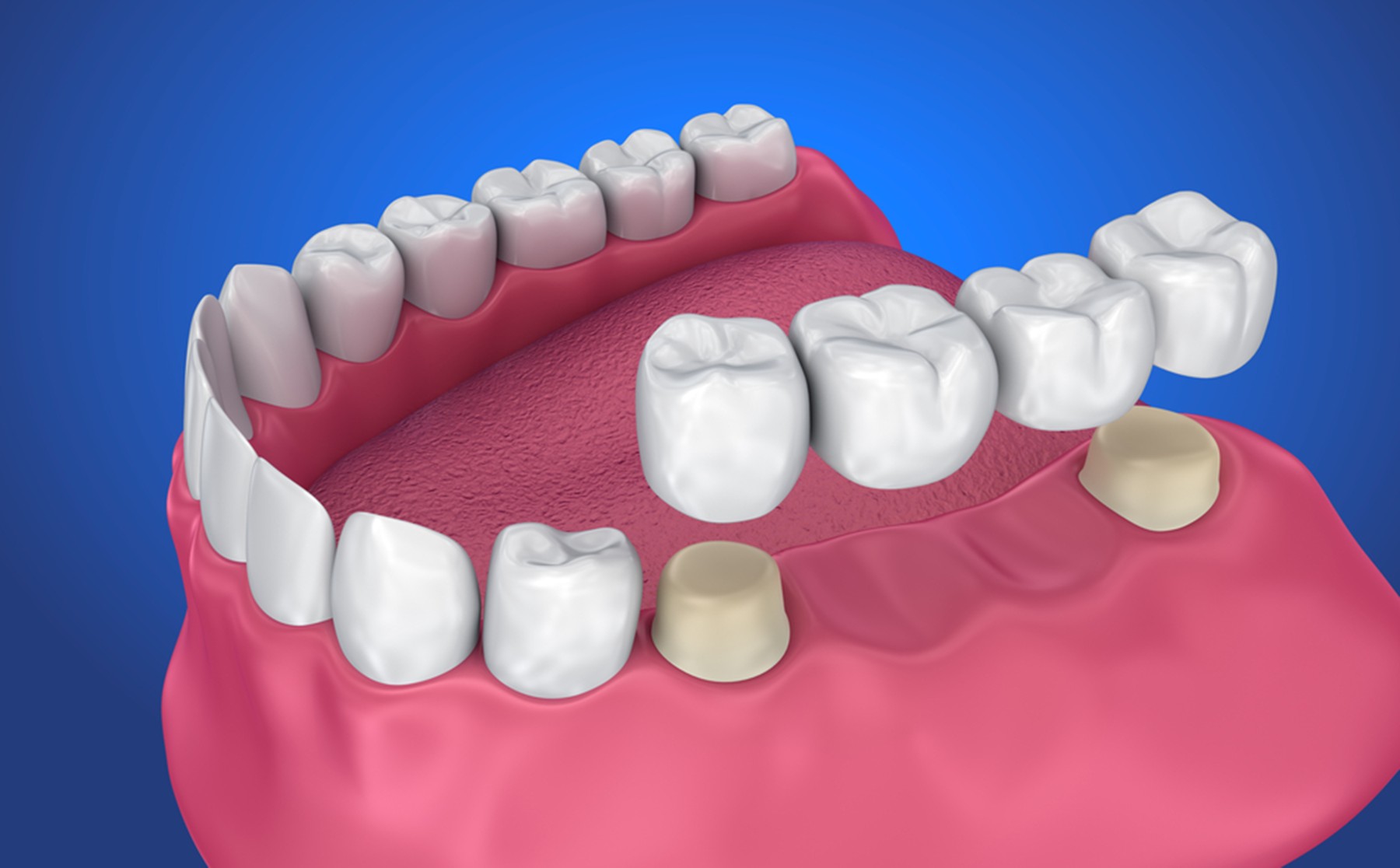Most of the time, when one hears the phrase “bridge the gap,” it is being used in a figurative sense. But in dentistry, dental professionals can literally bridge the gap between teeth. When you are missing one or more teeth, dental bridges in Cranston can bridge the gap between your healthy teeth using false teeth and dental crowns.
At Seton Dental Wellness, we use dental bridges near you to replace missing teeth and restore the function and appearance of your smile. In this article, we discuss the four kinds of dental bridges so that you can determine which is best for you.
Traditional Dental Bridges
This is the most common choice of dental bridge for a single missing tooth. A traditional dental bridge consists of a false tooth held in place using dental crowns, which are fitted over your natural teeth on each side of the gap. The teeth that hold the dental crowns are called abutment teeth. If you are missing multiple teeth in a row, a traditional bridge can be made with up to three replacement teeth attached to crowns.
Our dentist in Seton custom-fits the dental bridge and manufactures the false tooth so that it blends in seamlessly with your smile. Once fixed, traditional dental bridges become a permanent part of your mouth and are made out of porcelain or porcelain fused to metal, making for a very natural-looking and durable tooth replacement.
Cantilever Dental Bridges
This form of dental bridge is almost the same as traditional dental bridges, but cantilever bridges only require one tooth to use an abutment. This makes a cantilever bridge ideal for replacing a back tooth, where there is only one natural tooth to anchor the bridge in place.
One of the biggest advantages of cantilever bridges is that you only require one dental crown. This means that our dentist in Cranston will only need to prepare the enamel on one natural tooth, sparing any other natural teeth in your mouth.
Maryland Dental Bridges
If your teeth on each side of the gap created by your missing tooth are healthy and strong, and you do not wish to alter them to make space for dental crowns, then a Maryland bridge may be best for you. This form of dental bridge uses a framework of porcelain or metal that is directly bonded to your natural teeth. Just like traditional and cantilever bridges, the replacement tooth fits in the gap to restore your smile.
Since they don’t require crowns, Maryland bridges are a good choice for replacing front teeth. The framework can be hidden behind your teeth, so it won’t be visible when you speak or smile.
Implant-Supported Dental Bridges
If you are missing several teeth in a row, or if your natural teeth aren’t in good enough shape to support dental crowns, then your dentist near you may suggest that you get an implant-supported dental bridge. These use dental implants to support one or more replacement teeth in your mouth.
These are the most permanent forms of dental bridges in Seton, but they also require several visits and long healing periods. Like other forms of dental bridges, these can match the shape and color of your natural teeth and blend perfectly in with your smile.
How to Choose the Right Dental Bridge
Selecting the best dental bridge for your oral health needs depends on many factors:
- Cost
- Complexity of procedure
- Number of teeth needed to fill the gap
- Your overall oral health
- The materials needed
When you visit Seton Dental Wellness, our dentist will examine your mouth and recommend the best dental bridge for you based on your smile goals. Please contact us to book a consultation today!

